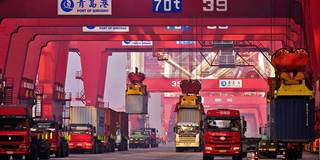If US President Donald Trump follows through on his protectionist threats against China, the short-run consequences – including a trade war – could be serious. But, in the longer term, US protectionism could be a blessing in disguise for all emerging economies as they seek to boost their international clout.
NEW YORK – US President Donald Trump’s protectionist threats against China have spurred much concern. If he follows through on his promises and, say, officially labels China a currency manipulator or imposes higher import tariffs, the short-run consequences – including a trade war – could be serious. But, in the longer term, a turn toward protectionism by the United States could well be a blessing in disguise for China.

NEW YORK – US President Donald Trump’s protectionist threats against China have spurred much concern. If he follows through on his promises and, say, officially labels China a currency manipulator or imposes higher import tariffs, the short-run consequences – including a trade war – could be serious. But, in the longer term, a turn toward protectionism by the United States could well be a blessing in disguise for China.